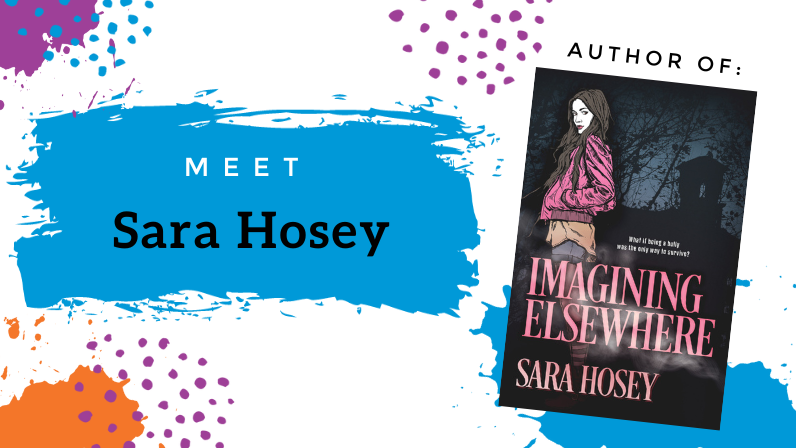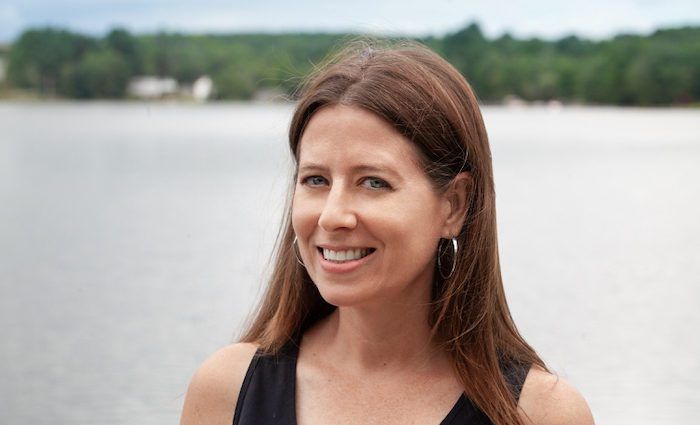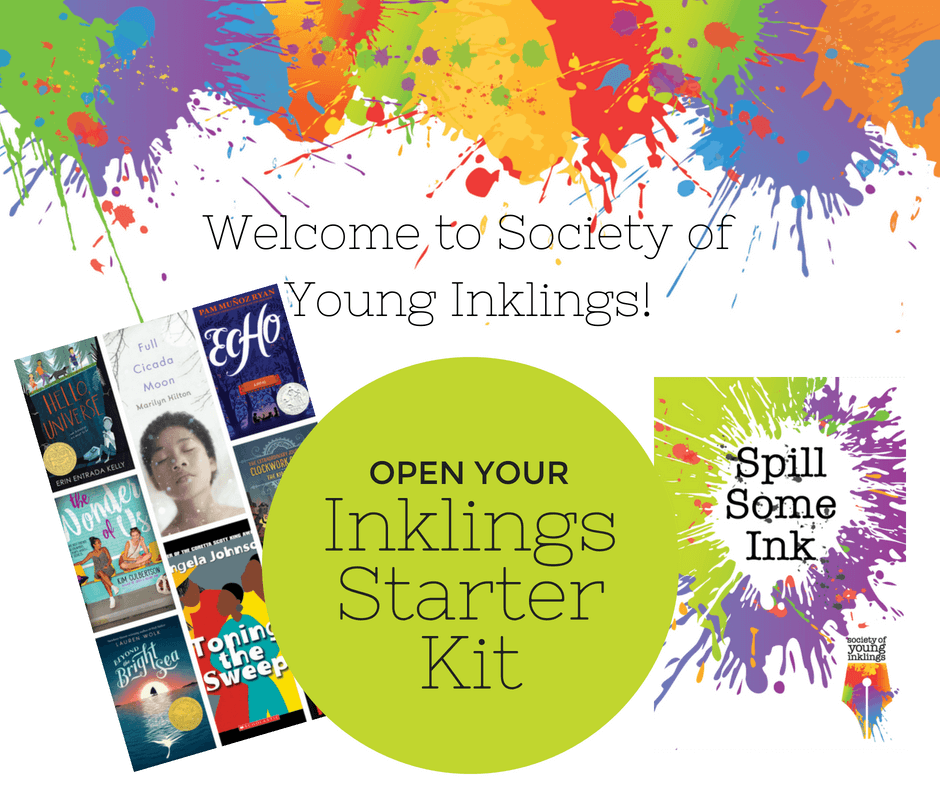In December’s issue of the Ink Splat, we loved talking with Sara Hosey, author of Imagining Elsewhere. Sara shares her favorite writing tip with us: “Seize an idea and then try to finish what you started. Then decide whether or not it’s something you want to invest more time in. The best books and stories are the finished ones.”

Writing Challenge
The December Writing Challenge is a fun one! Write what you remember from a song, nursery rhyme, poem, or schoolyard chant that was popular when you were small. Turn what you remember into a phrase or fragment, and then use that as a title for a new, original poem or story or piece of life-writing.

An Interview with Sara Hosey
Tell us a little bit about your books and the inspiration for each of them.
Iphigenia Murphy follows a girl, Iffy, who has to run away from an unsafe home. She goes in search of her long-lost mother—whom she thinks is living in a city park—and, despite the profound difficulties and dangers, the park becomes a place of safety, community, and love. Iffy makes a best friend (Corinne), meets a cute guy (Anthony), and even finds a dog (Angel). She gets lost to get found. I have so many sources of inspiration—including some of my friends and former students who have experienced homelessness, foster care, intimate partner violence, and abuse. I wanted to focus on how these issues can and do affect many young people and especially many girls and women.
My second YA novel, Imagining Elsewhere, deals with “issues” too, but is much less heavy. Imagining Elsewhere is a paranormal novel set in 1988. Astrid, a former bully, has relocated to the small, creepy town of Elsewhere, where she meets an even bigger bully—Candi—and Candi has supernatural powers. When Candi says “jump,” you jump. And she wants Astrid to be her bestie. The question for Astrid is: will she revert to her old and awful ways or will she stand up to Candi and potentially lose everything?
I was totally inspired by the Twilight Zone episode, “It’s a Good Life,” about a boy with supernatural powers who terrorizes his small community. (There’s the original black-and-white version and a remake in the 80s Twilight Zone movie). When I was a kid, I found the prospect of a child-tyrant absolutely fascinating and chilling. I still do! The little boy was so unpredictable. He made awful decisions, and no one was able to tell him to cut it out or to teach him a lesson. And everyone had to go along with what he liked, whatever his whim was that day. I was thinking about that episode, and I started to wonder: how would that town have been different if the boy continued to grow up? If he were a teenager? Would he be more or less terrifying? And then I wondered, what if he were a girl?
Imagining Elsewhere isn’t a reboot of that episode, but the issues it raises were the ones I wanted to explore in my book. What’s it like to live with an unreasonable, immature tyrant? What kinds of absurd demands might she make? How far would people go to keep her happy and keep themselves safe?
Did you always know that you wanted to be a writer? What’s the first thing you remember writing?
Yes. The first piece of fiction I remember writing was a novel titled Rita when I was seven or eight years old—it was an extremely thinly-veiled version of my own life and it was very boring. I kept writing—some terrible poetry in middle school, and then some “graphic novels” which were actually just collections of dirty jokes. In college, I was into playwriting, but then in graduate school, I pivoted hard into non-fiction and academic writing. Then, after several years, I returned to Creative Writing and it’s like coming home.
Our Membership theme for November was “Connections Across Time.” What are some of the challenges you encountered in writing a novel that takes place in the past, and how did you tackle them?
One challenge is the way that attitudes have changed—for the better. That is, when writing about the 80s and 90s, I didn’t want to sugarcoat the racism and sexism that was so prevalent in so much of the culture, but I also didn’t want to replicate or naturalize it. So that was a balancing act. For example, there is a trans character in Iphigenia Murphy, and I wanted to make clear how much transphobia negatively impacted her, without making it all about her suffering
In Imagining Elsewhere, I drew on my background as an academic writer and used footnotes. This was super fun. They allowed me to digress and to provide a crucial background. So, for example, when I mention an 80s movie like Sixteen Candles, I can include a note like: “This movie is totally racist and sexist. Watch at your own peril.”
And a follow-up: Do you think it was harder or easier to write historical fiction that takes place in a relatively recent time?
I think it’s easier to write about the more recent past, especially if it’s an era that I have firsthand experience with. I have ideas for novels set in medieval times, but I would need to do a daunting amount of research to do it well. However, I have a work in progress set in the near-future, and that’s also taking quite a bit of research!
How much research did you have to do, and how did you approach it?
I researched, watched movies, and listened to music, but honestly, it wasn’t too hard for me to remember the 80s and 90s, so I was able to mine a lot of my own experiences and observations of those decades. Although I am not old enough to have experienced the 80s as a teen, I did watch a lot of movies about teens in the 80s when I was a kid, and that sort of worked for me because, you see, the town of Elsewhere is super-insular, and Candi’s only real access to the “outside world” is through media like TV and movies. Clearly, these are not strictly accurate depictions of what life is like for other teens. So, what winds up happening is that Candi, who runs Elsewhere, is trying to recreate what she has come to believe “normal” life is like, and as result, so much of life in Elsewhere is really just performative. Like, there is a football team, but there are never any games.
What felt the most different from the present in writing from the novel’s time? Were there any unexpected connections between the present and the time of the novel that you discovered in the process of writing it?
The number one difference in terms of both of my novels and today is cell phones and the Internet. In some ways, a lot of the problems in both books—including access to information and the ability to connect with others, to ask for help or just escape a stifling situation—are now not as difficult or insurmountable as they once were, at least for many young people. That’s not to say that everyone has equal access, but that as a writer, not having phones and the Internet available can be very helpful. That is, it’s easier to put your characters into situations that will ask them to figure out what they can do, what they’re made of, without getting any assistance from anyone else. However, some things haven’t changed that much and despite our incredible access to information, the issues dramatized in both books—in Iphigenia Murphy, violence and abuse in the home, homelessness among abused youth as well as LGBTQIA+ youth, substance abuse, and Imagining Elsewhere, bullying and peer pressure— are still very much with us.
What’s a favorite writing tip that you’d like to share?
Commit to finishing your projects. After the first feverish five pages or whatever it is, it’s so common to feel like, meh, maybe I’ll put this away and do something else. I recommend trying to see things through to completion. After you finish it, you can choose to throw it out or put it away or revise it, but in my experience, the best books and stories are the finished ones.

A special thank you to Sara Hosey for sharing with us! Read more about Sara and her work @ https://sarahosey.com/
Sara Hosey is the author of two young adult novels, Iphigenia Murphy, called “one of 2020’s best” and Imagining Elsewhere, which Kirkus describes as an “interesting take on power, bullying, and fear,” as well as a novella, Great Expectations.
Sara grew up in Queens, an area that might be described as an “urban suburbia,” and has lived in Washington, D.C. and in Wisconsin, where she once stayed, for a while, on an island in the middle of a lake, with only her cat for company.
She is now back in New York, where she lives with other, less-adventurous cats, a dog, and her family.

INKLINGS CONNECT
Summer Camps
Join us for a writing camp this summer. We can't wait to see what you create!
Keep your creativity flowing with our upcoming community events:
SPARK YOUR CREATIVITY!


